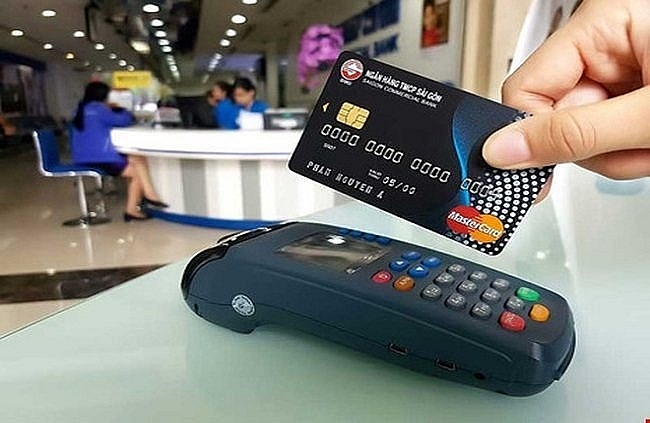Hà Nội to develop non-cash payments
 |
| The Hà Nội People’s Committee recently issued a plan to develop non-cash payments, urging all supermarkets and restaurants to put in place cashless payment devices or systems by 2020. - Photo vietnamfinance.vn |
Under Plan No. 51/KH-UBND, 85 per cent of the city’s suppliers of electricity, telecommunications and communication will accept bill payment via cashless payment channels, while 60 per cent of individuals and households will pay by card or mobile channels for their shopping and consumption needs.
The city will also focus on developing new and modern payment methods suitable to rural areas, so that it can encourage local people to use the modern payment services.
The plan also targets to increase the number of people having access to modern payment services. Accordingly, at least 70 per cent of the city’s population above the age of 15 will have bank accounts by the end of 2020.
Besides this, the city will take measures to develop e-payment and retail payment services, as well as strengthen e-payment in public administrative services and provide guidance on non-cash payments to the citizens.
Under the scheme, the committee requested the State Bank of Việt Nam (SBV)’s Hà Nội branch and related institutions to provide more payment services via bank accounts. It includes the goal of ensuring utility payments such as electricity, tuition, telecommunications and television charges are made electronically.
In the future, the city will also invest in developing digital infrastructure and e-payment services such as internet-banking, near-field communication (NFC) payment, e-wallet and non-touch payment.
According to the SBV’s Payment Department, non-cash payment is gradually becoming a trend in Việt Nam as the use of cash is reducing remarkably. Cash payment has reduced from 14 per cent in 2010 to 12 per cent now, it reported.
The department reported that 96.2 million cards have been issued nationwide, up 210 per cent from the early 2011.
There are some 60 organisations providing internet banking payment services and 30 organisations providing mobile banking payment services.
The payment infrastructure has also been improved, as evidenced by the rapid increase of ATMs and points-of-sale (POS), by 47 per cent and 300 per cent, respectively.
What the stars mean:
★ Poor ★ ★ Promising ★★★ Good ★★★★ Very good ★★★★★ Exceptional
Related Contents
Latest News
More News
- Securing capital and efficiency for Vietnam’s 2026-2030 growth ambitions (December 17, 2025 | 10:00)
- Energy sector in need of blended finance mechanisms (December 17, 2025 | 09:00)
- Vietnam still has room to mobilise capital for sustainable growth (December 17, 2025 | 08:57)
- Long-term capital seen as key hurdle to green growth (December 16, 2025 | 08:00)
- Gold prices swing amid tax debate and import uncertainty (December 15, 2025 | 18:04)
- Agribank frames bank credit as catalyst for green growth (December 15, 2025 | 17:59)
- Vietnam’s green transition demands collective financial action (December 15, 2025 | 12:00)
- VIR workshop highlights capital and policy for sustainable development (December 15, 2025 | 11:00)
- Promoting digital assets initiative in Vietnam (December 13, 2025 | 09:30)
- Experts flag gaps as national financial strategy under review (December 12, 2025 | 15:13)

 Tag:
Tag:






















 Mobile Version
Mobile Version